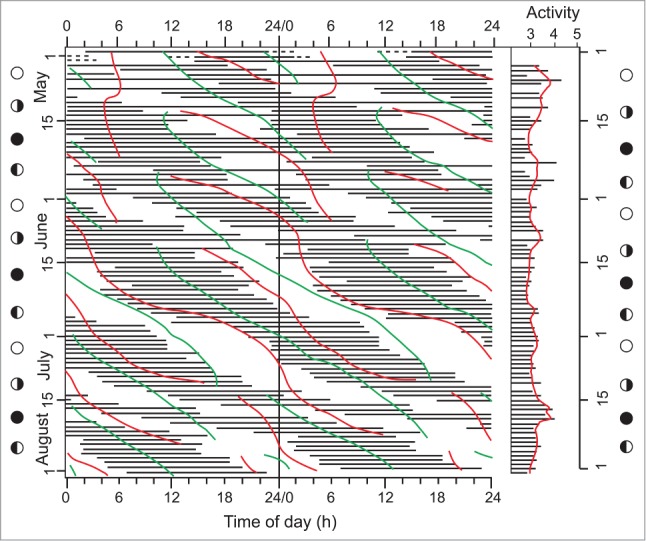Figure 2.

The perception of the passage of lunisolar time by a human. Activity pattern from a human subject in the total darkness of a cave at Cheddar, UK, over a period of 127 days during April-July 1966, and without any knowledge of the chronological time in the outside world. The sleep (black bars) and wakefulness periods were recorded each day with a resolution of 1 h. Superimposed is the contemporaneous lunisolar tidal pattern (red and green lines, as in Fig. 1). The sleep-wakefulness periods are bounded by the turnings of the gravimetric tide. Lunar phases are shown on the right-hand axis, together with the √hours of wakeful activity (right-hand panel, as in Fig. 1). (Sleep/awake pattern data from Fig. 8 of Mills et al.152).
